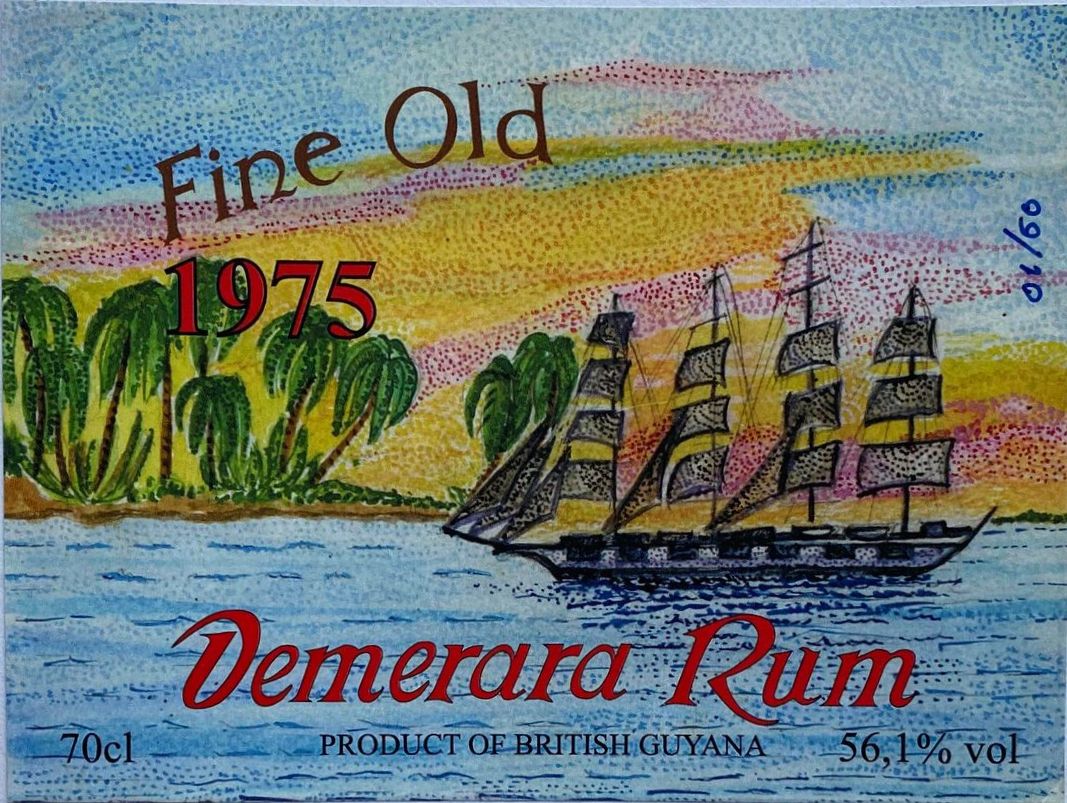
In spite of rums from various 1970s years having been issued throughout that period (many are still around and about and surfacing every now and then at wallet-excavating prices), it is my contention that 1974-1975 were the real years that disco came to town. No other years from the last century except perhaps 1986 resonate more with rumistas; no other years have as many Demeraras of such profound age, of such amazing quality, issued by as many different houses. I’d like to say I’ve lost count of the amount of off-the-scale ‘75s I’ve tasted, but that would be a damned lie, because I remember them all, right back to the first one I tried, the Berry Brothers & Rudd PM 1975. I still recall the rich yet delicate solidity of the Norse Cask, the inky beauty of the Cadenhead Green label 40.6%, the black licorice and sweet tobacco of the Rendsburger, Velier’s own 1975...and now, here is another one, dredged up by another Italian outfit we never heard of before and which, sadly, maybe we never will again. Unlike Norse Cask, it has not vanished, just never bothered to have a digital footprint; in so doing it has left us only this equally overlooked and forgotten bottle of spiritous gold, and some more recent bottlings known only to ur-geeks and deep-divers.
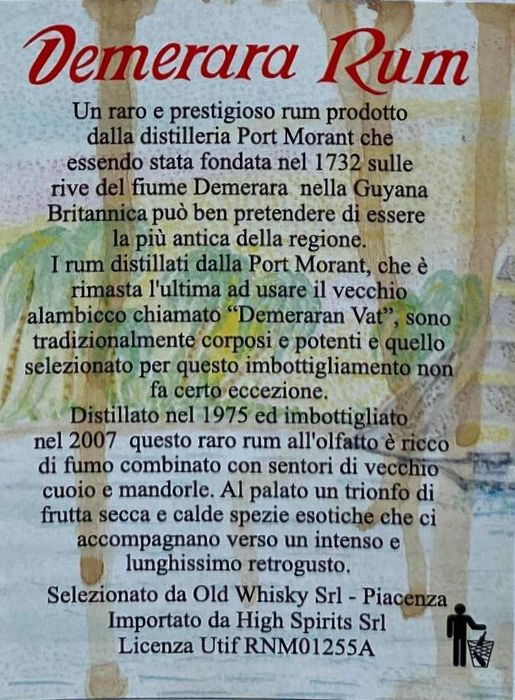 For the kitch, I’m afraid there is not much. Thanks to my impeccably fluent lack of Italian, I can tell you it’s a 1975 Port Mourant that was bottled in 2007, and it appears to be one of those single barrel releases often indulged in by importers – this time an Italian outfit called High Spirits, which doesn’t exist beyond its odd one-page website that leads nowhere and says nothing – see below for some notes on this. The rum is 56.1%, dark red brown….
For the kitch, I’m afraid there is not much. Thanks to my impeccably fluent lack of Italian, I can tell you it’s a 1975 Port Mourant that was bottled in 2007, and it appears to be one of those single barrel releases often indulged in by importers – this time an Italian outfit called High Spirits, which doesn’t exist beyond its odd one-page website that leads nowhere and says nothing – see below for some notes on this. The rum is 56.1%, dark red brown….
…and smells absolutely magnificent. The aromas are, in a word, loaded. The distinctiveness of the PM still comes through in a wave of aromatic wine-infused cigarillos’ tobacco, coffee, bitter chocolate and, yes, licorice. You pause, enjoy this, sniff appreciatively, dive in for Round 2 and brace for the second wave. This emerges after a few minutes: and is more musky, darker in tone shot through with jagged flashes of tarter sharper notes: muscovado sugar, molasses, plums, blackberries, ripe black cherries, bananas, all the best part of, oh, the Norse Cask, of which this is undoubtedly the equal. And then there’s a bit extra for the fans, before the taste: cinnamon, vanilla, herbs, and (I kid you not) even a touch of pine resin.
And the profile, thank God, doesn’t let us down (think of what a waste that would have been, after all this time). People like me use the nose a lot to tease out flavour-notes but the majority of drinkers consider only the taste, and here, they’ll have nothing to complain about, because it continues and underlines everything the smells had promised. Again, thick and pungent with bark and herbs and fruit: plums, dark ripe cherries, ripe mangoes, bags of licorice, and an interesting combo of mauby and sorrel. Caramel and toffee and chocolate and cafe-au-lait dosed with a generous helping of brown sugar and whipped cream, each flavour clear and distinct and outright delicious – the balance of the various soft, sharp, tart and other components is outstanding. Even the finish does the rum honour – it’s long, fragrant and lasting and if it could be a colour, it would be dark brown-red – the hues of licorice, nuts, raisins, dates, stewed apples and caramel.
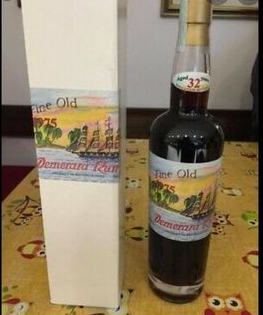 There’s just so much here. It’s so rich, smooth, warm, complex, inviting, tasty, sensual and outright delicious. Just as you put down the glass and finish scribbling what you optimistically think is the final tasting note, you burp and think of yet another aspect you’ve overlooked. Yes, High Spirits probably bought the barrel from a broker or an indifferent Scottish whisky maker who passed it by, but whoever selected it knew what they were doing, because they found and teased out the muscular poetry of the core distillate that in other hands could (and in its knock-offs sometimes does) turn into a schlocky muddled mess.
There’s just so much here. It’s so rich, smooth, warm, complex, inviting, tasty, sensual and outright delicious. Just as you put down the glass and finish scribbling what you optimistically think is the final tasting note, you burp and think of yet another aspect you’ve overlooked. Yes, High Spirits probably bought the barrel from a broker or an indifferent Scottish whisky maker who passed it by, but whoever selected it knew what they were doing, because they found and teased out the muscular poetry of the core distillate that in other hands could (and in its knock-offs sometimes does) turn into a schlocky muddled mess.
At end, over and beyond how it tasted, I find myself coming back to that age. Thirty two years. Such rums are getting rarer all the time. Silver Seal and Moon imports and Cadenhead and G&M occasionally upchuck one or two in the twenties, and yes, occasionally a house in Europe will issue a rum in the thirties (like CDI did with its 33YO Hong Kong Hampden, or those 1984 Monymusks that are popping up), but the big new houses are mostly remaining in the teens, and tropical ageing is the new thing which further suggests a diminution of the majority of aged bottlings. To see one like this, with the barrel slowly seeping its influence into the rum over three decades from a time most rum lovers were unborn and the rumworld we live in undreamt, is an experience not to be missed if one ever has the chance.
(#766)(91/100)
Other Notes
- My thanks to Gregers, Pietro and Johnny for their help on this one, the pictures and background, and, of course, for the sample itself.
- If I read the label right, it’s possible that as few as 60 bottles were issued.
- For a recap of several 1975 Port Mourant rums, see Marius’s awesome flight notes on Single Cask.
- High Spirits is a small Italian importer of whiskies and rums and moonlights as an occasional bottler. It is run by a gentleman by the name of Fernando Nadi Fior in Rimini (NE Italy), and he is an associate and friend of Andrea Ferrari and Stefano Cremaschi of Hidden Spirit and Wild Parrot respectively. High Spirits has quietly and primarily been dealing in whiskies and very occasional limited bottlings of rum since the formation of the company after the dissolution of the previous enterprise, Intertrade Import in the 1970s, but is still mostly unknown outside Italy.
- I’ve often wondered about the prevalence of 1974 and 1975 Guyanese rums, so many of which were Port Mourant, We don’t see 1970s PM rums that often to begin with (Velier has a 1972, 1973 and other years as well, but they’re an exception), yet for some reason these two years seems to be unusually well represented across the various companies’ lines, and I doubt that’s a coincidence. Somehow, for some reason, a lot of barrels from Guyana went to Europe back then and yet for few other years from that decade. Hopefully one day we’ll find out why.
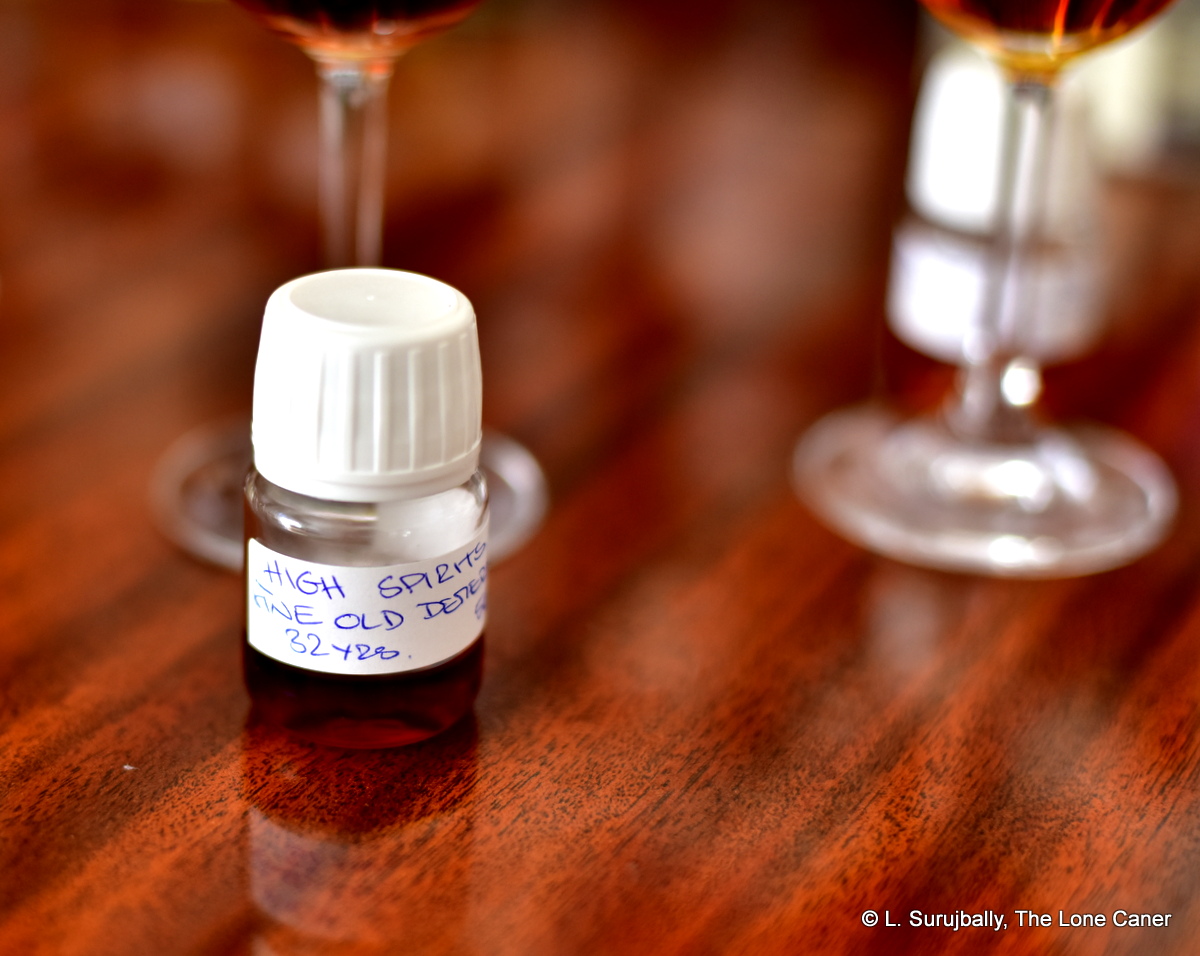
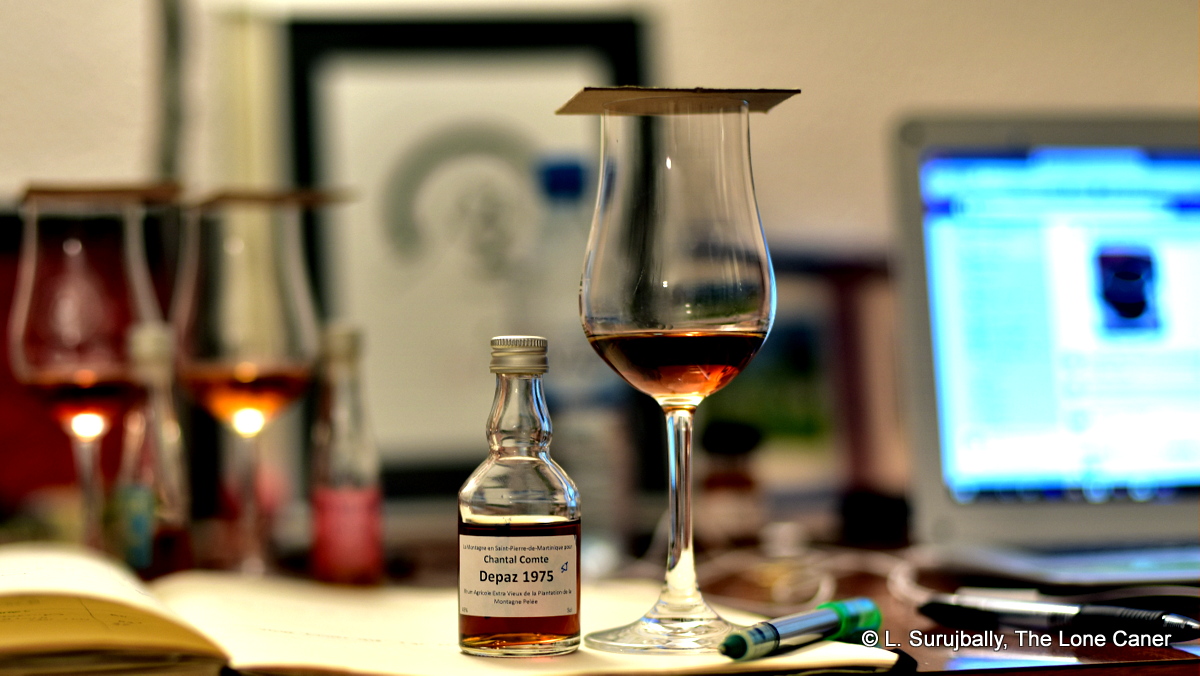
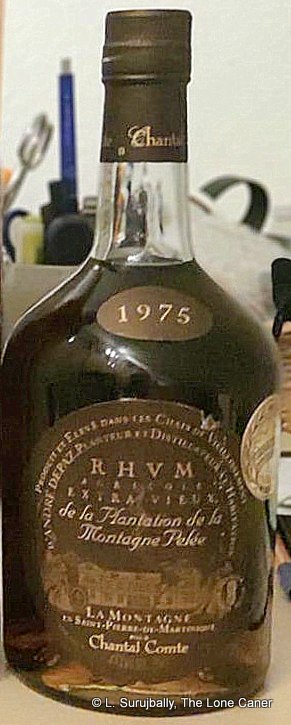 The full and rather unwieldy title of the rum today is the Chantal Comte Rhum Agricole 1975 Extra Vieux de la Plantation de la Montagne Pelée, but let that not dissuade you. Consider it a column-still, cane-juice rhum aged around eight years, sourced from Depaz when it was still André Depaz’s property and the man was – astoundingly enough in today’s market – having real difficulty selling his aged stock. Ms. Comte, who was born in Morocco but had strong Martinique familial connections, had interned in the wine world, and was also mentored by Depaz and Paul Hayot (of Clement) in the late 1970s and early 1980s, when Martinique was suffering from overstock and poor sales.. And having access at low cost to such ignored and unknown stocks allowed her to really pick some amazing rums, of this is one.
The full and rather unwieldy title of the rum today is the Chantal Comte Rhum Agricole 1975 Extra Vieux de la Plantation de la Montagne Pelée, but let that not dissuade you. Consider it a column-still, cane-juice rhum aged around eight years, sourced from Depaz when it was still André Depaz’s property and the man was – astoundingly enough in today’s market – having real difficulty selling his aged stock. Ms. Comte, who was born in Morocco but had strong Martinique familial connections, had interned in the wine world, and was also mentored by Depaz and Paul Hayot (of Clement) in the late 1970s and early 1980s, when Martinique was suffering from overstock and poor sales.. And having access at low cost to such ignored and unknown stocks allowed her to really pick some amazing rums, of this is one.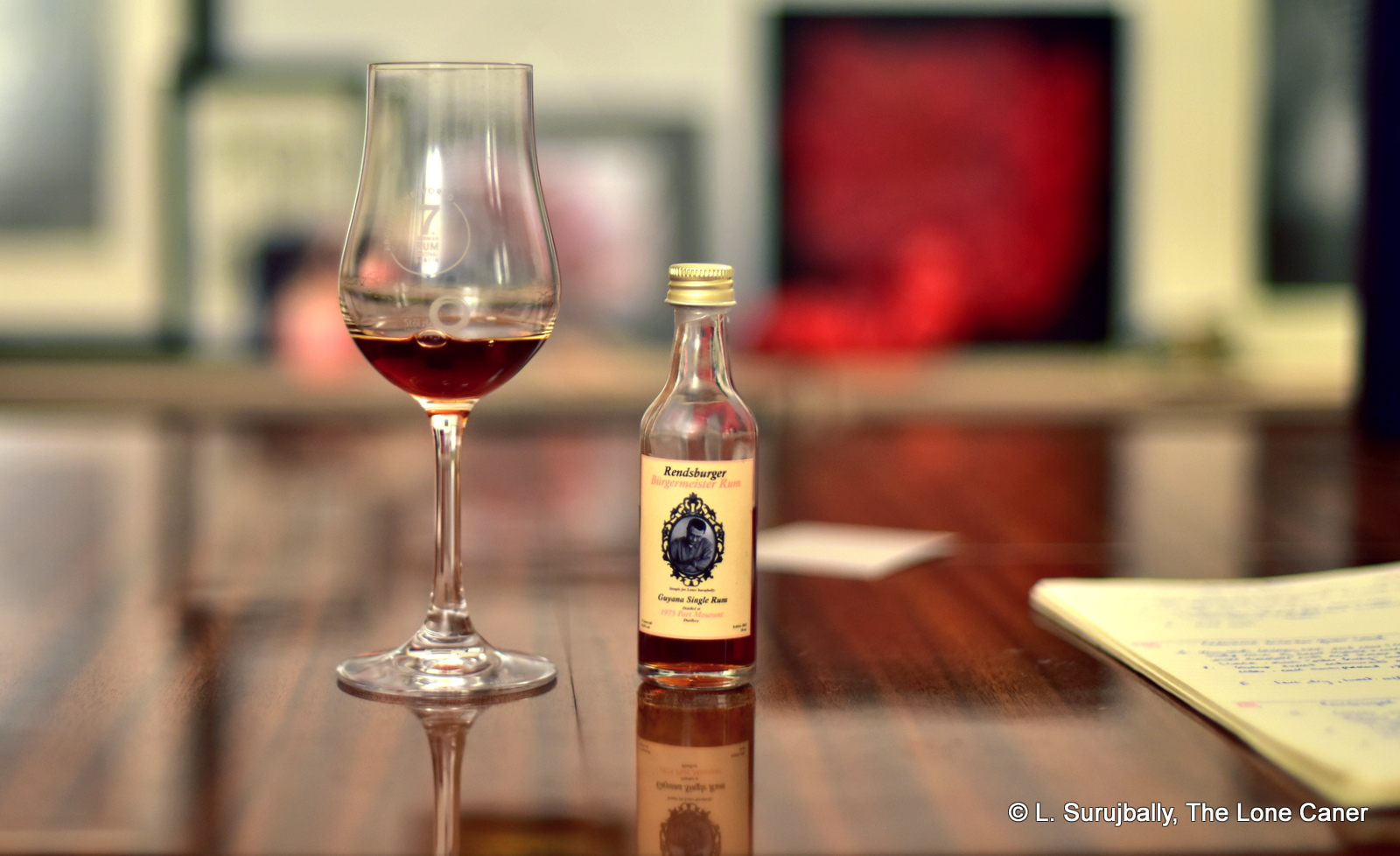
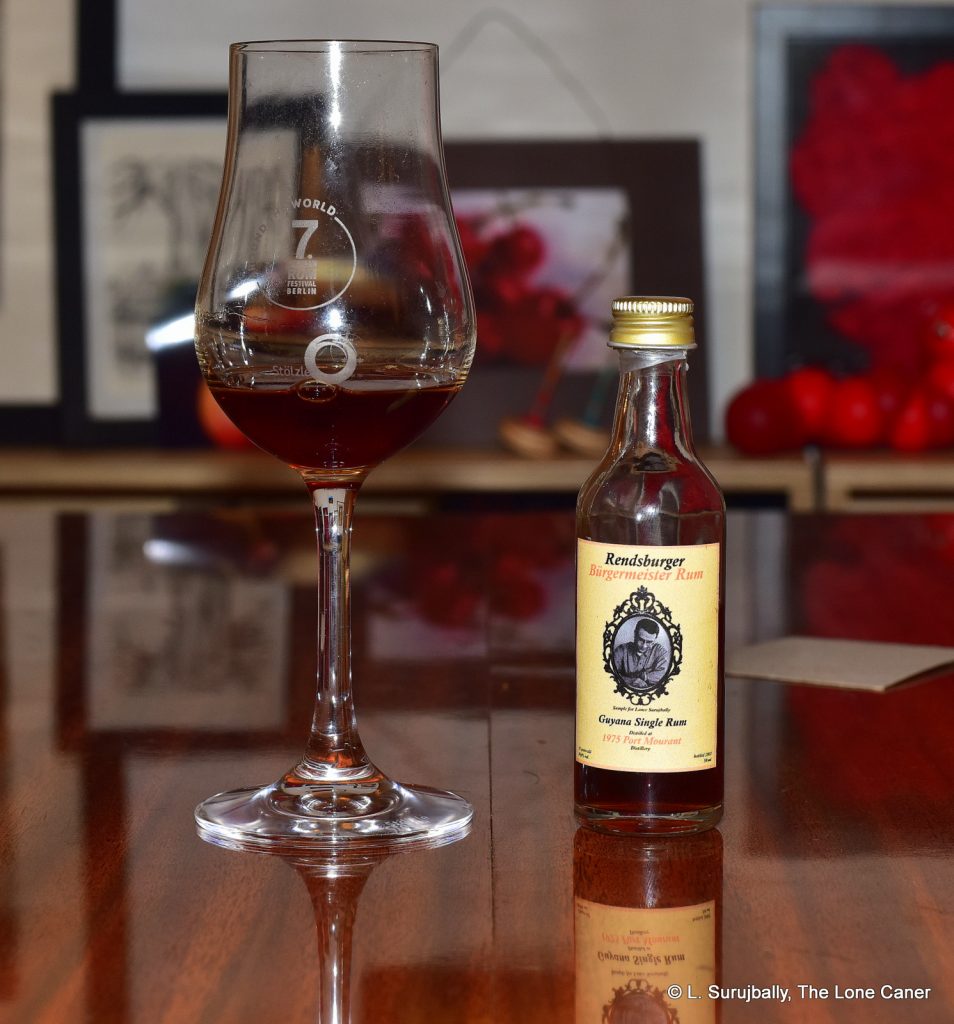 As for the palate, man, I’m in heaven, because I just found another 1975 to add to the pantheon. That same growling, thick richness of the nose segued to the tongue with no pause, no hesitation and no detours. The strength was near perfect – it gave strength without sharpness, allowing all the flavours to march solidly across the stage and present themselves one after the other: licorice, vanilla, caramel, bags of fruits, a little saltiness, biscuits and cereal. The whole thing was warm and thick with dark flavours that never seemed to want to stop showing off and even the oak, which at first I thought started to take on an unhealthy dominance after some minutes (I was actually writing “Mozart just exited the scene and is replaced by Salieri!” before crossing it out), retreated into the background, chilled out, and was (to my relief) content to be a part of the troupe rather than a scene stealing hog. The exemplary and traditional Port Mourant profile finished long, slow, voluptuously and with chocolate, coffee grounds, some oak, vanilla, raisins and anise, and overall, my take was it was simply one of the Grand Old Men of the plantation and the still.
As for the palate, man, I’m in heaven, because I just found another 1975 to add to the pantheon. That same growling, thick richness of the nose segued to the tongue with no pause, no hesitation and no detours. The strength was near perfect – it gave strength without sharpness, allowing all the flavours to march solidly across the stage and present themselves one after the other: licorice, vanilla, caramel, bags of fruits, a little saltiness, biscuits and cereal. The whole thing was warm and thick with dark flavours that never seemed to want to stop showing off and even the oak, which at first I thought started to take on an unhealthy dominance after some minutes (I was actually writing “Mozart just exited the scene and is replaced by Salieri!” before crossing it out), retreated into the background, chilled out, and was (to my relief) content to be a part of the troupe rather than a scene stealing hog. The exemplary and traditional Port Mourant profile finished long, slow, voluptuously and with chocolate, coffee grounds, some oak, vanilla, raisins and anise, and overall, my take was it was simply one of the Grand Old Men of the plantation and the still. 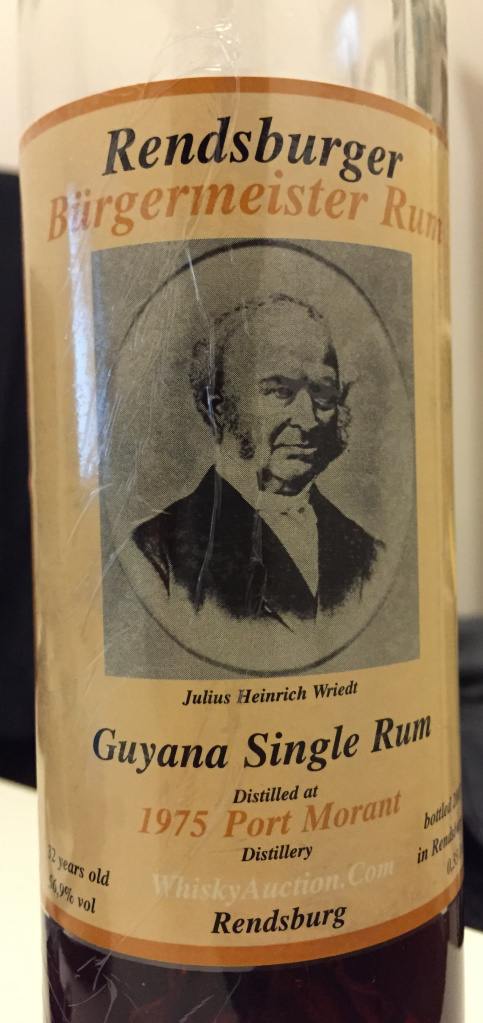
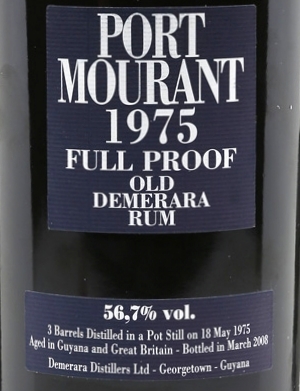
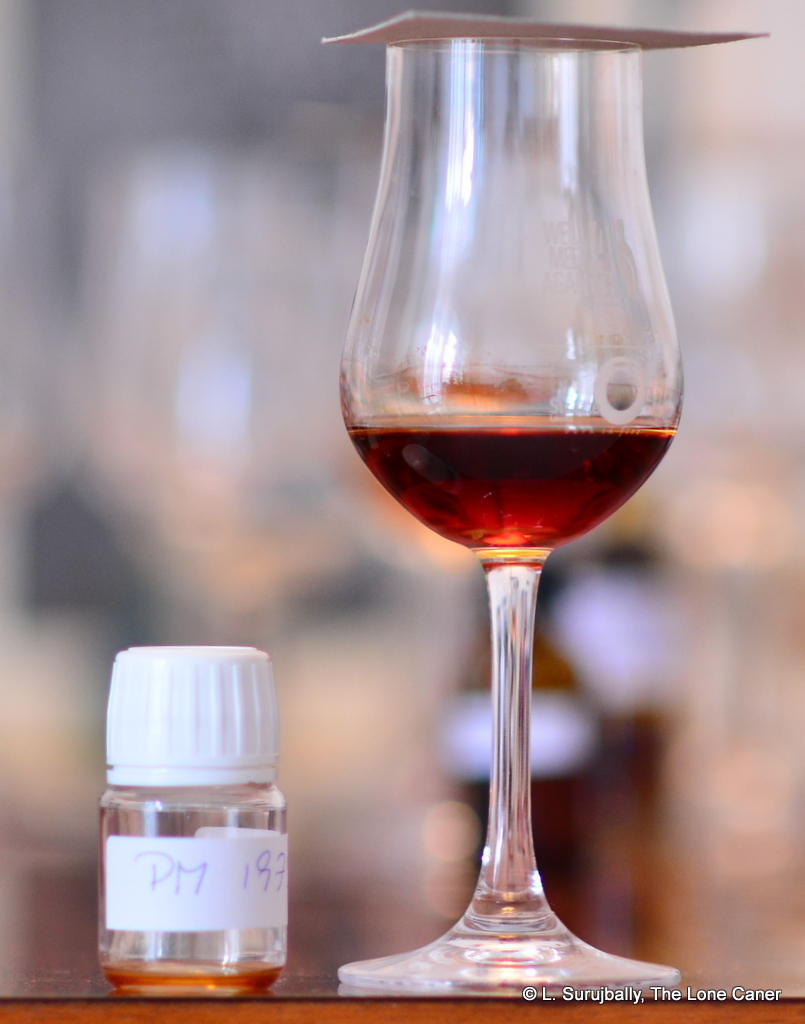
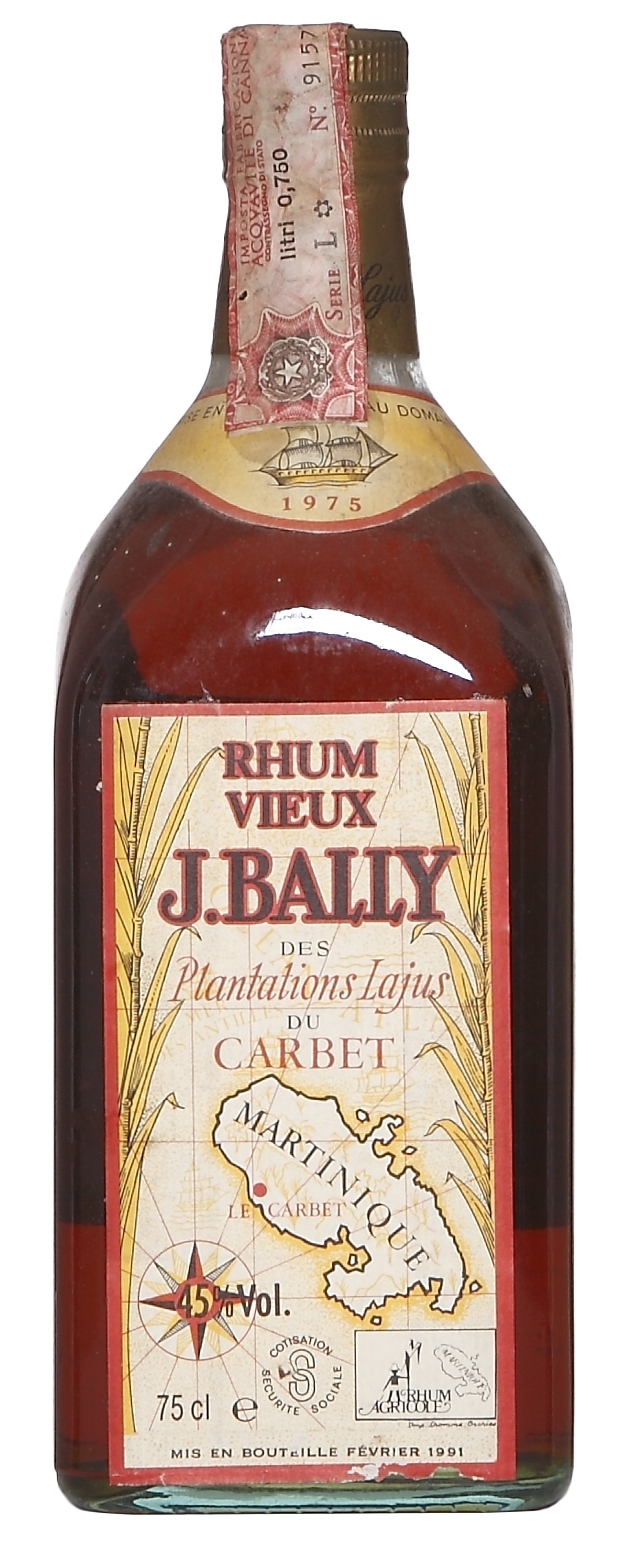
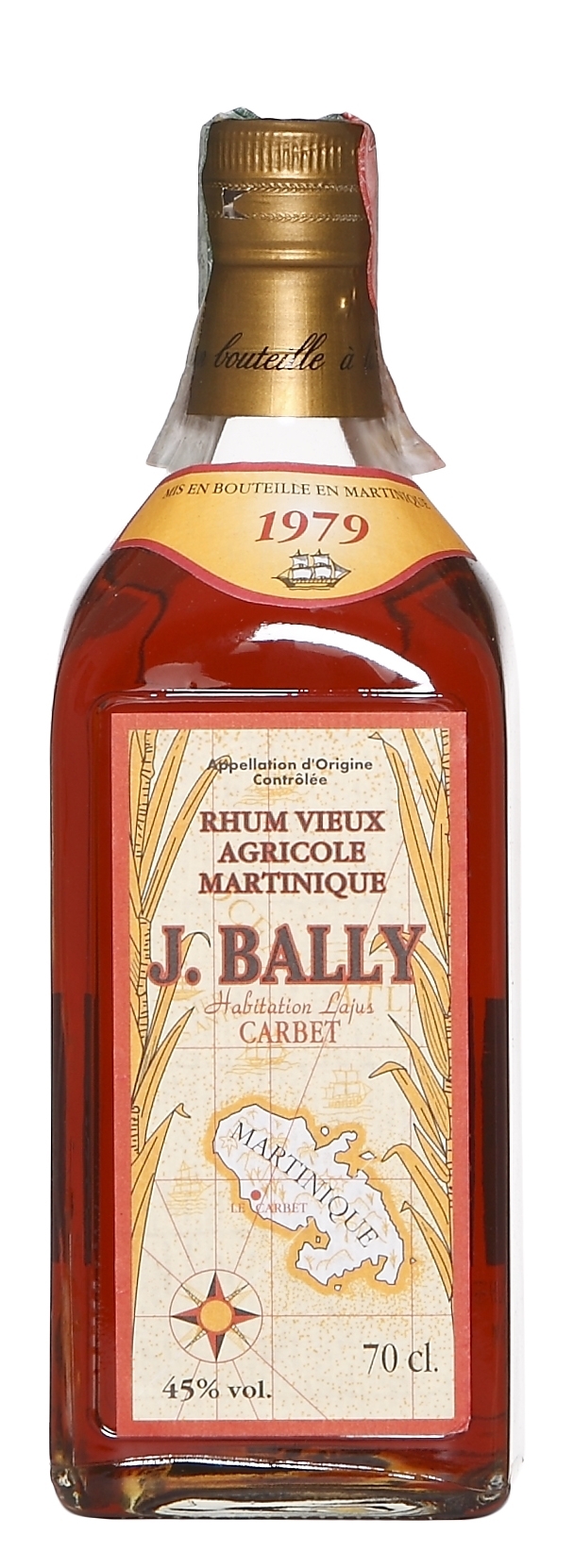


 The dark mahogany-red Cadenhead rum was actually quite similar to the Norse Cask. Some rubber and medicinals and turpentine started the nose party going, swiftly gone. Then the licorice and tobacco — of what I’m going to say was a blend with a majority of Port Mourant distillate — thundered onto the stage, followed by a muted backup chorus of wood, oak, hay, raisins, caramel, brown sugar. I sensed apricots in syrup (or were those peach slices?). It’s the lack of oomph on the strength that made trying the rum an exercise in frustrated patience for me. I knew the fair ladies were in there…they just didn’t want to come out and dance (and paradoxically, that made me pay closer attention). It took a while to tease out the notes, but as I’ve said many times before, the PM profile is pretty unmistakeable and can’t be missed…and that was damned fine, let me reassure you, no matter what else was blended into the mix.
The dark mahogany-red Cadenhead rum was actually quite similar to the Norse Cask. Some rubber and medicinals and turpentine started the nose party going, swiftly gone. Then the licorice and tobacco — of what I’m going to say was a blend with a majority of Port Mourant distillate — thundered onto the stage, followed by a muted backup chorus of wood, oak, hay, raisins, caramel, brown sugar. I sensed apricots in syrup (or were those peach slices?). It’s the lack of oomph on the strength that made trying the rum an exercise in frustrated patience for me. I knew the fair ladies were in there…they just didn’t want to come out and dance (and paradoxically, that made me pay closer attention). It took a while to tease out the notes, but as I’ve said many times before, the PM profile is pretty unmistakeable and can’t be missed…and that was damned fine, let me reassure you, no matter what else was blended into the mix. The word “accessible” I used above does not mean available, but
The word “accessible” I used above does not mean available, but 




